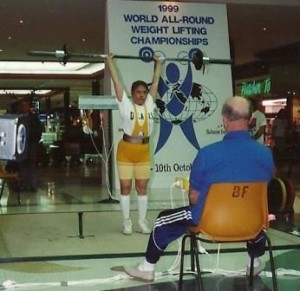Hermann Goerner Deadlift Dozen (plus 1)
Date: October 30 and 31(if necessary)
Where: Clark’s Gym, 720 Grace Lane, Columbia, MO
Weigh ins: 9:00
Entry Fee: None
Awards: Certificates
Lifts: Deadlift-heels together; Hack Lift; Deadlift-2 bars; Deadlift-1 arm right; Deadlift-1 arm left; Deadlift – No Thumb, One Arm Right; Deadlift – No Thumb, One Arm left; Jefferson lift; Deadlift – Fingers, Index; Deadlift – Fingers, Middle; Deadlift – Fingers, Ring; Deadlift – Fingers, Little; Deadlift – Reeves
There is no entry form for this meet, but please let Bill know you re coming by October 25. You can reach him by email at yeoldclark@gmail.com; telephone at 573-474-4510; or by mail at 3906 Grace Ellen Drive, Columbia, MO 65202-1739

